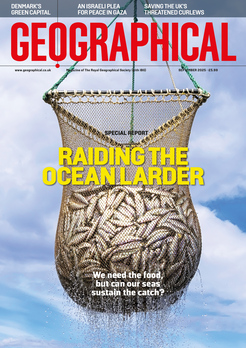
Technological innovations are driving the rise of digital twins. What does that mean for our cities?
By
According to the World Economic Forum, the global digital twin market is booming. Last year, it projected that the sector would be worth US$48.2 billion by 2026, a compound annual growth rate of 58 per cent. Another report, published by tech firm ABI Research, predicted that more than 500 cities worldwide would be using some kind of digital-twin technology by 2025 – in China, the number has already grown from two in 2018 to 72 in 2021.
The concept of digital twins first emerged in the automated-engineering industry. Manufacturers that created digital replicas of machine components could test them before making changes to the physical machines. Examples include Ford, which develops a digital twin for each model of vehicle it produces, and General Electric, whose digital wind farm is used to monitor more than 40,000 turbines across different sites. More recently, digital twins have come to have a much wider range of applications in many other industries, particularly urban planning. But when it comes to cities, Ralph Coleman, sales director at Bluesky, says there’s still a lot of uncertainty around what the term actually means.
Bluesky is a UK-based company specialising in aerial surveying. Its flagship product, MetroVista, is advertised as ‘the key to unlocking the smart city revolution’. So far, Bluesky has created 3D maps of 20 cities in the UK using a hybrid aerial camera fitted to a small aircraft. The camera is specifically developed to capture three geospatial datasets simultaneously: vertical and oblique aerial photography, similar to what you would expect to see on Google Earth, and high-density LiDAR imagery. LiDAR, Coleman explains, ‘works by firing millions of pulses of light out of a sensor and collecting them again’ to accurately measure the height of the terrain and objects on the ground, such as trees and buildings. ‘If you pull all those datasets together, you can create what is called a 3D-textured mesh – essentially a digital 3D model of an area,’ says Coleman, ‘and this begins to form the basis of a digital twin.’

One of the challenges this type of technology faces is that it can’t be updated in real time. Meanwhile, cities are dynamic – they’re constantly changing and being rebuilt. As a result, Coleman says, some people might view a 3D city mesh as only being a digital twin at the point at which it’s photographed, and that may only happen every few months. Instead, he suggests Metavista should be seen as a canvas onto which all sorts of other geospatial datasets can be added. These might come from mobile mapping systems on the ground (Stockholm uses taxis and smartphones) or 3D mapping using handheld laser scanners that can record building interiors. In the UK, it could be paired with Ordnance Survey and address data. ‘You start adding intelligence to the model, and that’s when it starts to take on a whole new life,’ says Coleman. ‘That’s the point at which it becomes a digital twin.’
In megacities such as Shanghai and Singapore, digital-twin cities are seen as essential for city planning and managing public services. In Brisbane, Australia’s fastest-growing city, an ever-evolving digital twin is helping engineers to build the Cross River Rail project, the city’s first subway, while Rotterdam is developing a digital twin to run its port. One of the greatest potential uses of digital-twin cities, however, could lie in making cities more resilient to climate change, by identifying air prone to air pollution, flooding and excessive heat.
‘We live in a 3D world, so the more we can do in a 3D environment, the more informed decisions can be made,’ says Coleman, adding that Bluesky has worked with city councils to help map urban tree cover, but also with telecommunications companies to help with 5G-network planning among other things. He also hints at a growing interest in the world of security. ‘For example, police forces could visualise a site in 3D detail to plan where to deploy their assets, or visualise a line of sight for firearms officers.’
In recent years, as the technology has advanced, digital-twin models have become more accessible to a broader range of users and market sectors. ‘For a long time, the main barriers have been the cost, the size of the datasets and the software needed to handle this type of spatial data,’ says Coleman. As costs have gone down and the software has caught up, users have been able to get more value from the data. These new uses, which are now starting to be realised, could be why digital twins are suddenly starting to gain so much traction. ‘In the past, there have been a lot of people saying, “Wow, they look incredible. But what are we actually using them for?” And I think we’re really starting to see the answer to that.’




